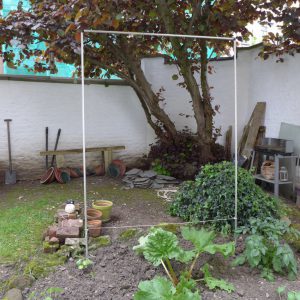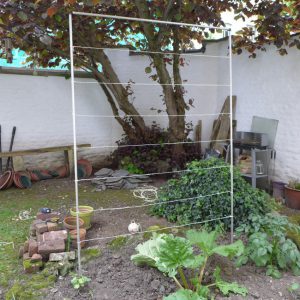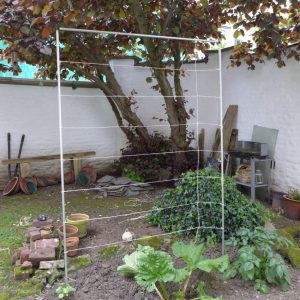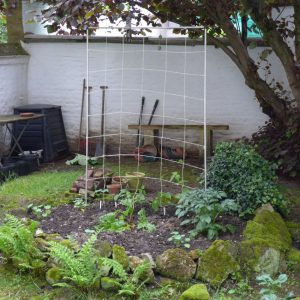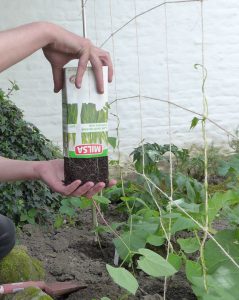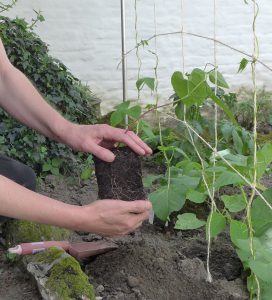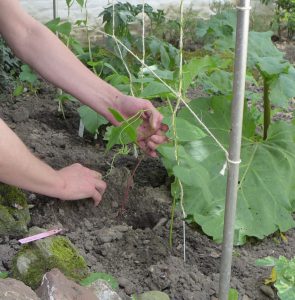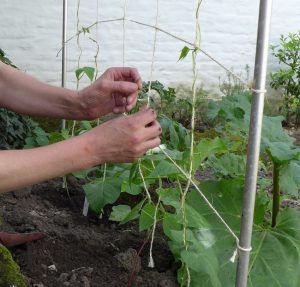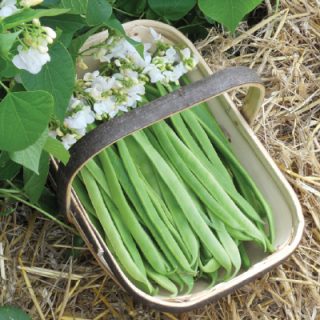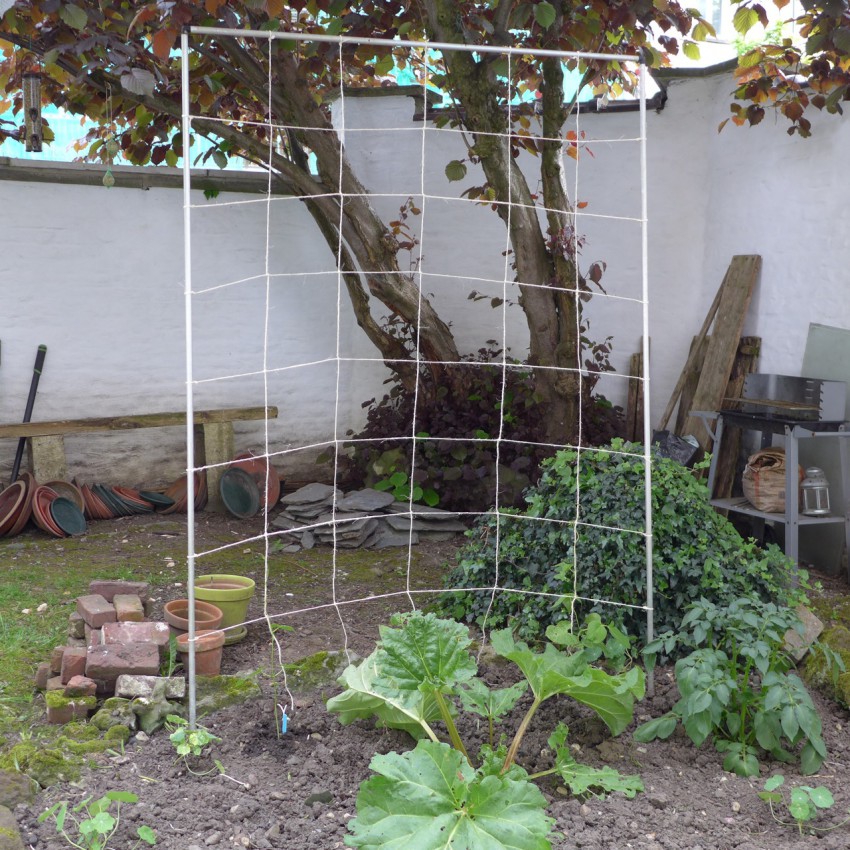
Climbing beans work well in limited space. Creating a climbing net for beans on a simple frame enables half a dozen plants to fill a small space. It is also faster to make a net than it is to go to a garden store and buy one.
To make this standing net requires two sides and a top. This simple aluminium tube frame is ideal for making a net. Lateral strings are tied across the frame at roughly 9 inch (22cm) spacing. This spacing allows a hand to pass through the net.
The vertical strings are tied to the top bar and tied to each lateral string as they fall down. It requires a simple knot onto the lateral strings. The vertical strings support the weight of the lateral strings. If this procedure was reversed all the lateral strings would fall to the ground.
This framed net has 5 vertical strings so 5 bean plants are planted one under each string. The beans particularly like rough garden string (not fine nylon string). The aluminium poles are left un-planted, possibly available for cucumber plants later.
Once planted, the bean plant is trained around the vertical string, preferably to a height above the first lateral string to get it started. The plant is watered in and should show signs of growth within 2 days. Once the plant starts to grow it can climb several inches per day.
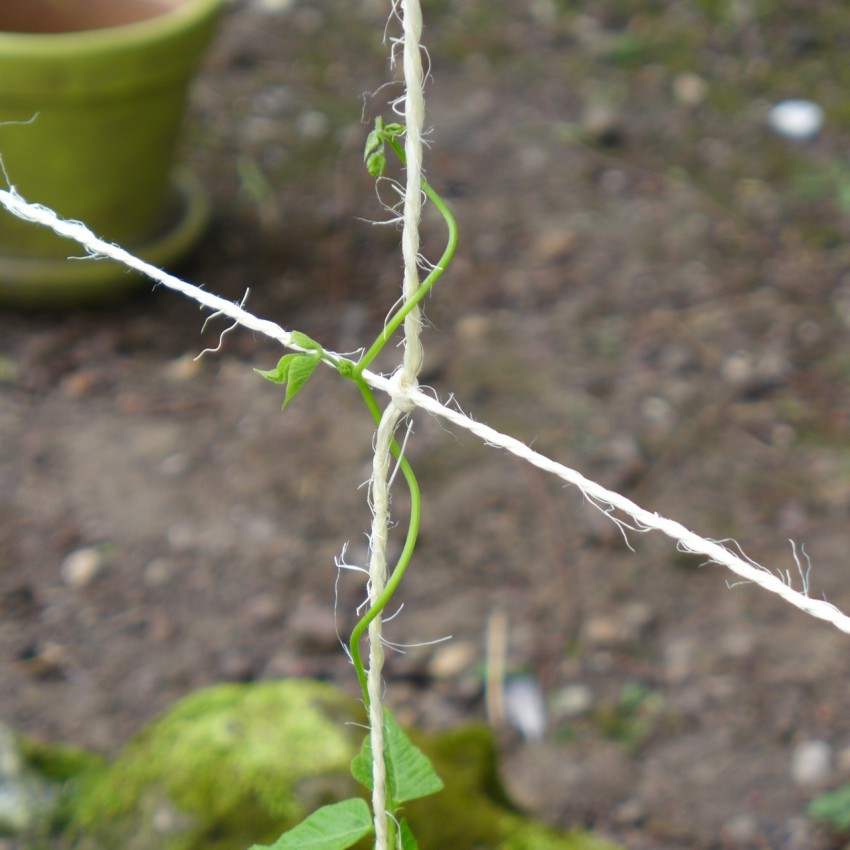
Some gardeners make quite an art form out of training beans. By using a bean net the plants can be trained to grow laterally as well as vertically, keeping their height down but allowing maximum growth. Training beans to fully use a growing net can become quite addictive.
